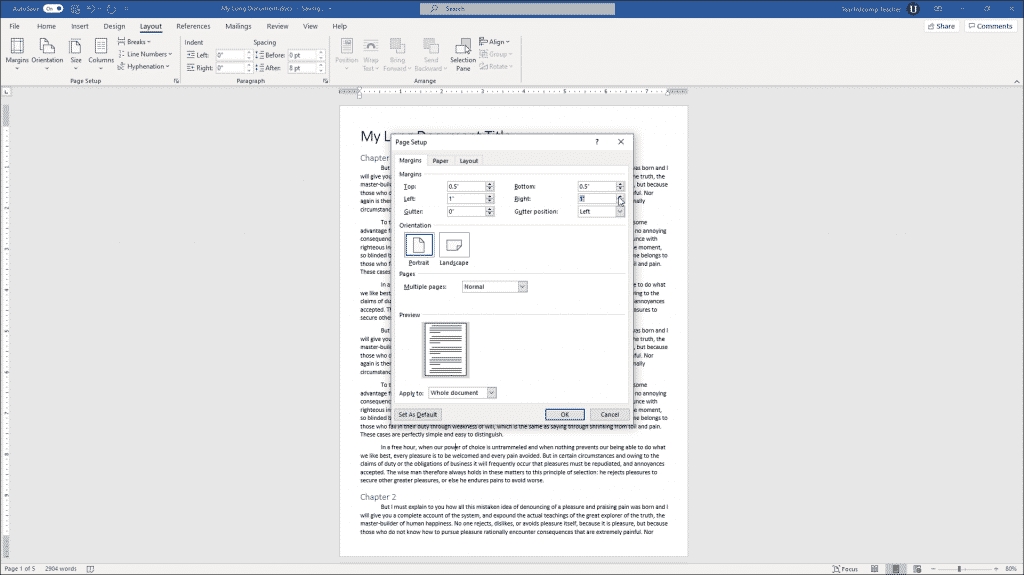


This is because, for this purpose, we need to decide for ourselves how wide the columns will be. If you have a recent version of Word, make sure that you have selected Fixed Column Width, and that it is set to Auto. You're now at the Insert Table dialog (Figure 1). In older versions of Word, from the main menu, choose Table > Insert. In recent versions of Word, from the main menu, choose Table > Insert > Table.
:max_bytes(150000):strip_icc()/how-to-change-margins-in-word-2-5b6069edc9e77c002c3c9210.jpg)

For our sample document, that will be in the paragraph below the heading "Information about this document". Position the Insertion Point (or cursor) where you want the table.
#Text continues past right margin in word how to
How to create a table to hold your textįigure 1: The Insert Table dialog box in Word 2002 (earlier versions will look a little different) You don't have to work out how much text will fit on one line, and how much should go to the next. The second is that text wraps within a cell of the table. The first is that it is really easy to change the widths of the columns, which will determine how far left or right our text is positioned on the page. There are two huge advantages of arranging text in a table. But if we had only text in the table, and took out the borders, we could use a table to position our text on the page. When you hear "table" you're probably thinking of something that looks like this: What's a table got to do with positioning text? You can use tabs to set up text like this, but it would be awkward. If you used the space bar instead of the tab, it would make no difference to the final document. Then tab again to type "One fox, one dog.". You would tab once and type "Characters in the story". In the old days, on a typewriter, you would do this by setting two tabs. Number of different letters used in the story


 0 kommentar(er)
0 kommentar(er)
